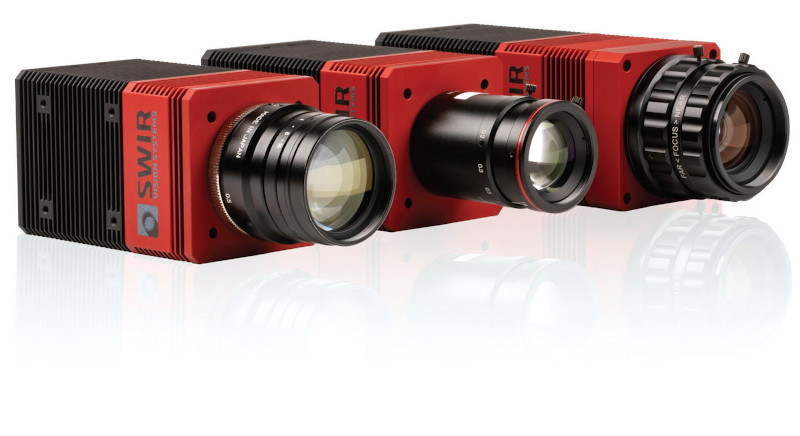Business leaders in the pharmaceutical industry are always looking to be on the cutting edge in all areas from scientific development to packaging and administration. If they fail to do so, someone else will step up and take their place so it’s all about ensuring that you are putting out the best results possible at all times and using all of the tools available to you. One technology that has been making a massive impact in all industries that involves manufacturing and delivery of any sort of product is machine vision imaging. This technology can help do everything from quality control of the actual product in packaging to digitizing all of your documents so you can put them in an online database and sort/record everything you need in one easy-to-access place.

Machine Vision Imaging is Going to Boost Your Production Massively
Anything involving pharma manufacturing is going to be among the most strictly regulated out there – quality and consistency are of the utmost importance. Strict FDA standards mean you as a manufacturer is at a very high level of liability for any errors that may occur in the course of production, whether those be totally accidental or due to incompetence. But with machine vision imaging by your side, you can rest much more assured that you will be delivering nothing but the highest quality pharma products. A quality machine vision imaging system used for quality control can even help to BOOST your productivity in a number of very small ways, while Not sacrificing any quality whatsoever.
Machine vision imaging is used in manufacturing processes around the world and in every different thing you can imagine. Here are some of the most common and practical uses at this point in time, mainly for pharma-related applications
- Barcode Verification
- Fill level verification
- Check for surface defects
- Verify integrity of packaging before shipping
- Check integrity of safety seal and cap/lid
- Check for large contaminants or anything out of place.
At this point, the primary use of machine vision imaging technology is a very detailed inspection of packaging and products not ensure everything inside looks as it should and no defects are picked up, as well as providing one more avenue of traceability through your supply chain. So on the one hand machine vision imaging works as a stalwart of quality doing a better job than even a team of the best QC experts in the world – all while being the main driver of your productivity once you really get it integrated into your system.
How Useful Could it Really be Though?
Being able to confidentially ensure that even the most minute things like rubber stoppers and plungers are in perfect shape in pharmaceutical vials and syringes are free of all defects and contamination is absolutely critical. A fully automated machine vision imaging system is designed to meet these exact needs, give you incredibly detailed inspection of everything coming out of your facility in masse, all without slowing down the process at all like a manual inspection would do, plus it’s far easier for a human to miss something than a machine!
Among the many use cases for digital sensors one other possible use-case that has seen a lot of real-world use is using machine vision imaging for fill-level inspection. Take a brewery for example – in their case, every single filled bottle would pass through an inspection sensor, that sensor will then trigger the camera to flash a very bright strobe of light out and snap a picture of the bottle in a perfect position. After taking the image it should be stored directly in the memory and processed by whatever software you have running in a pass-fail scenario based on the overall fill level of the bottle. Anything less than perfect will be failed and thrown out of the line right away.

Particular Benefits of Machine Vision Imaging
Speed is a machine vision camera’s best friend and greatest asset. This is how they are able to offer such a boost to overall productivity, you can rest 100% assured they will NOT be the slowest link in your supply chain or ever keep you waiting on anything. Manual inspections, by their very design, are slow and methodical – you can’t afford to miss a single thing! As technology advances the imaging and processing process is only getting faster and the overall process speeding up.
Most machine vision imaging machines are made with ease of use in mind and requiring less labor to do the same amount of work – streamlining is always the goal! As opposed to an entire team of quality control experts going through each and every batch and the product you make to check for defects this imaging equipment can do all of that with a much higher success rate, and for lower operating costs.
Though almost all machine vision applications are done only using 2D imaging, the use of 3D camera applications is growing quickly and will surely surpass it one day. Applications of this can be as seemingly simple as analyzing the fill level on pharma vials containing things that need to be tested to ensure they are filled to the proper level or imaging right through the rapping of food items to scan for defects and such. Machine vision camera can, with the help of infrared, see right through a lot of things that keep the human eye from being able to do good quality control.
If you are working in any kind of manufacturing field then you are FAR behind the curve if you are not implementing machine vision imaging into your quality control and overall manufacturing process. These cameras are able to pick up even the smallest of defects with incredibly fast frame rates and a wide field of view that allows for everything meaningful to be captured. With industrial imaging, it’s important to get the cheapest cost per megapixel possible while not sacrificing any quality of productivity.